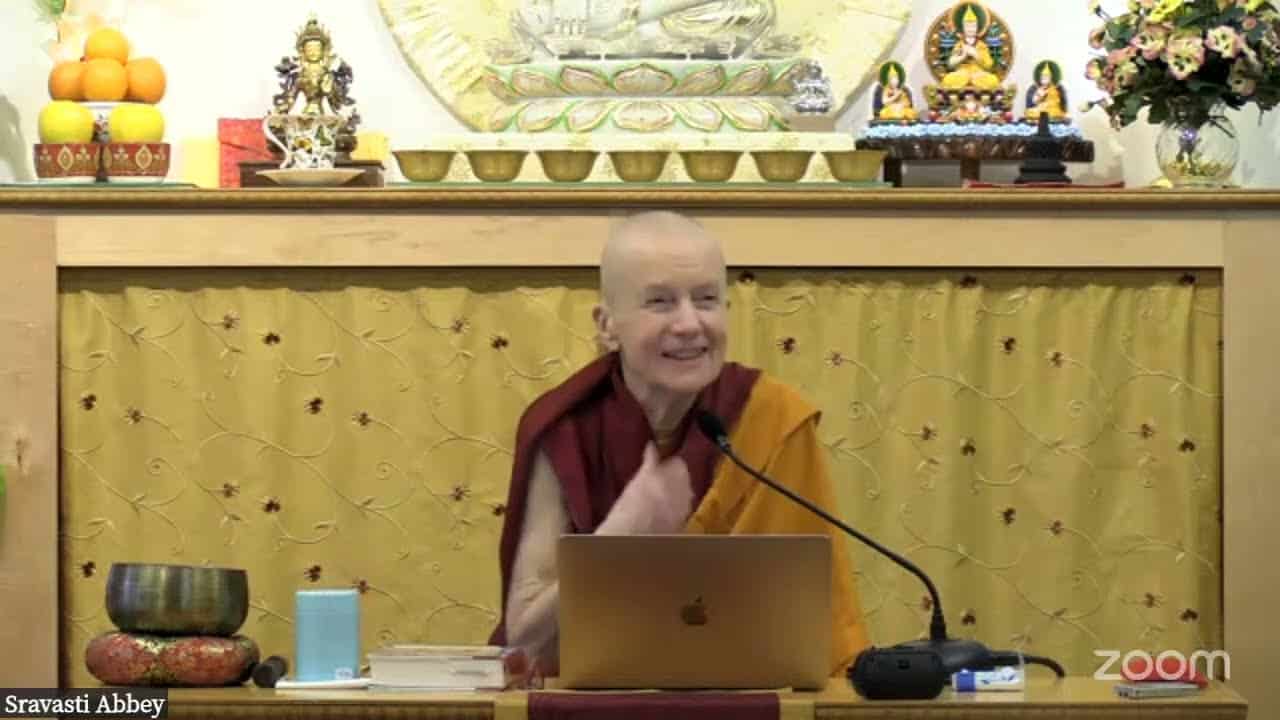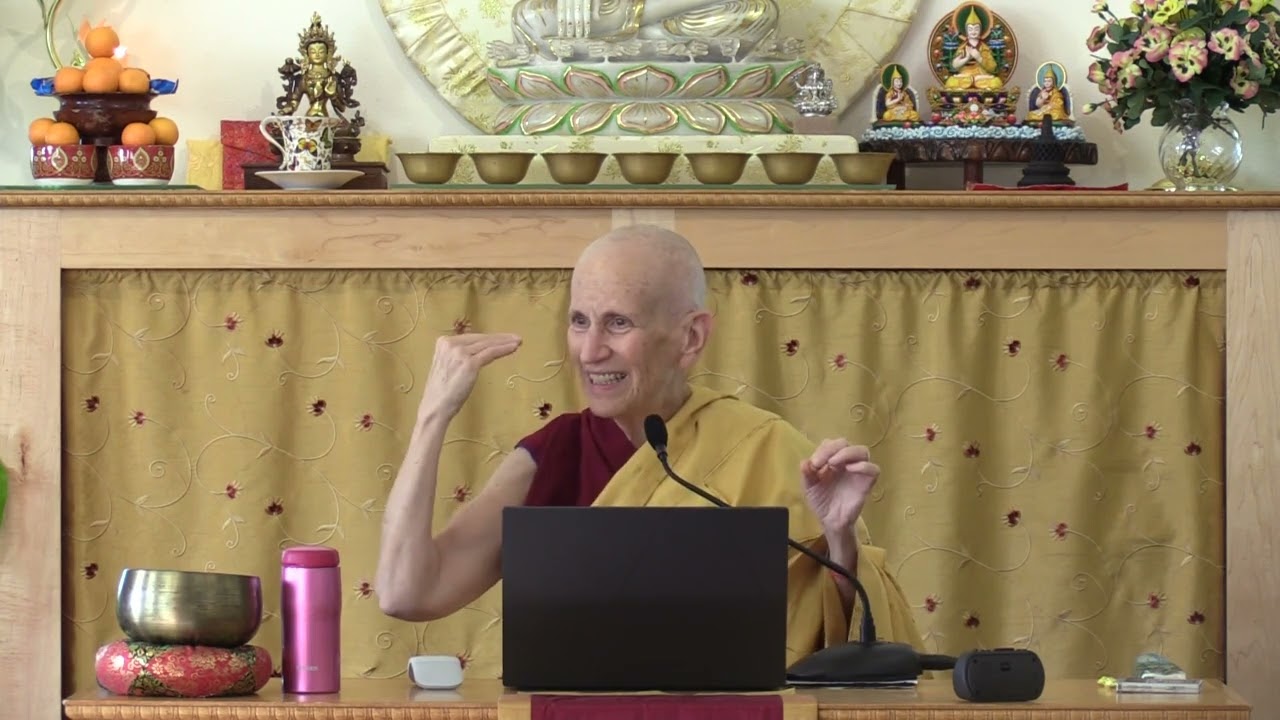Intent and purpose of monastic life
38 Following in the Buddha's Footsteps
Part of an ongoing series of teachings based on the book Following in the Buddha's Footsteps, the fourth volume in The Library of Wisdom and Compassion series by His Holiness the Dalai Lama and Venerable Thubten Chodron.
- Proper behaviour for lay practitioners and monastics
- Guidelines for lay teachers and monastic teachers
- Value of monastic precepts
- Qualities cultivated by monastics
- Motivation to become free from cyclic existence
- Properly preparing before ordination and training in monastic life after ordination
- Four ways monastics using the requisites
38 Intent and Purpose of Monastic Life (download)
Contemplation points
- What are some of the qualities of a monastic life that provide a conducive environment for progressing along the spiritual path?
- In the text, His Holiness the Dala Lama says that “everyone must choose the lifestyle most suitable for themselves and have confidence in their ability to practice.” Consider your own life and circumstances. How can you best make use of this precious human life whether you are living as a lay or monastic practitioner.
- What are some of the benefits of keeping monastic precepts for a long time?
- Consider each of the factors that enable a practitioner to become a monatic and then live as one. How do these benefit monastic life? How can lay practitioners also benefit from cultivating these? What effect do they have on the practitioner themselves as well as the world around them?:
- Dwelling restrained by the restrained of the precepts
- Persisting in right behavior
- Seeing danger in the slightest faults
- Observing the commitments he has taken regarding body, deed, and word
- Devote to the skilled and purified life
- Perfected in ethical conduct
- With the sense doors guarded
- Skilled in mindful awareness
- Content
Venerable Thubten Chodron
Venerable Chodron emphasizes the practical application of Buddha’s teachings in our daily lives and is especially skilled at explaining them in ways easily understood and practiced by Westerners. She is well known for her warm, humorous, and lucid teachings. She was ordained as a Buddhist nun in 1977 by Kyabje Ling Rinpoche in Dharamsala, India, and in 1986 she received bhikshuni (full) ordination in Taiwan. Read her full bio.


